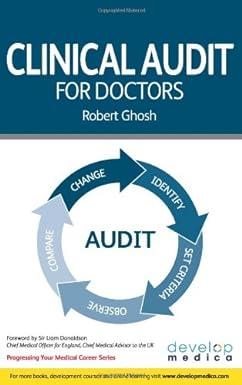Question
SWING V. STEADY Swing Manufacturing and Steady Manufacturing both operate in the widget industry, but with radically different cost structures. Swing is a capital-intensive, automated
SWING V. STEADY Swing Manufacturing and Steady Manufacturing both operate in the widget industry, but with radically different cost structures. Swing is a capital-intensive, automated manufacturer, while Steady is a labor-intensive "job-shop." Monthly operating data are as follows: Swing Manufacturing Steady Manufacturing Sales 5,000 units 5,000 units Price $10.00 $10.00 Variable $2.50 $5.50 Fixed Cost $35,000/month $20,000/month Full Cost $9.50 $9.50 Current Profit $2,500/month $2,500/month Please answer the following questions.
DO NOT calculate the profitability of these changes by calculating profit levels before and after the changes, spreadsheet style. That approach would take four times longer and not show me that you understand the formulas. Use the simple concept of contribution to calculate just the change in profits due to the proposed price changes. Swing and Steady both currently have equal (50%) shares of the market. Each is evaluating opportunities to enhance profits. One opportunity involves selling to a low-value, but potentially high-volume, market segment not currently served by either company. The potential increase in sales for either company entering that market alone would be at least 40% (2000 units). If they both entered, the potential sales increase would be at least 20% for each of them. Unfortunately, reaching that market would require pricing at $8.50, 15% below current levels.
e. Given the financial information that you have at this point, would Steady be better off to withdraw from this market altogether? Fortunately, crisis has a way of focusing the mind. After reading Michael Porter's Competitive Advantage, Steady's management decided to analyze the entire value chain of which widgets are a part. Steady learned that at least 3500 units of current market demand comes from companies that must modify the commodity widget they buy to meet their specific needs. This creates an opportunity for Steady to integrate forward, casting specialized widgets to meet the needs of each user. While Steady's costs of manufacturing will rise substantially, the increase will be less than what buyers currently spend to modify the generic widgets. To make specialized widgets, Steady would need to invest in additional fixed capital generating a fixed charge of $3,000 monthly and refocus its entire operation to produce specialized widgets exclusively. Steady's management believes that it could charge prices at least $6.00 higher than the going commodity price, but would incur additional variable cost of $3.00 more per unit. [Note: this decision would preclude Steady's continued production of generic widgets, unless of course Steady opted to buy all new buildings and equipment for the new operation, which would generate incremental fixed costs of $23,000 monthly rather than the $3,000 assumed above.]
f. What is the minimum monthly unit sales that Steady would require to make it more profitable as a specialty widget manufacturer than it is currently as a commodity manufacturer?
g. How much additional profit would Steady earn as a specialty widget, given its minimum case scenario of 3500 specialty units at a $6.00 price premium?
Step by Step Solution
There are 3 Steps involved in it
Step: 1

Get Instant Access to Expert-Tailored Solutions
See step-by-step solutions with expert insights and AI powered tools for academic success
Step: 2

Step: 3

Ace Your Homework with AI
Get the answers you need in no time with our AI-driven, step-by-step assistance
Get Started


